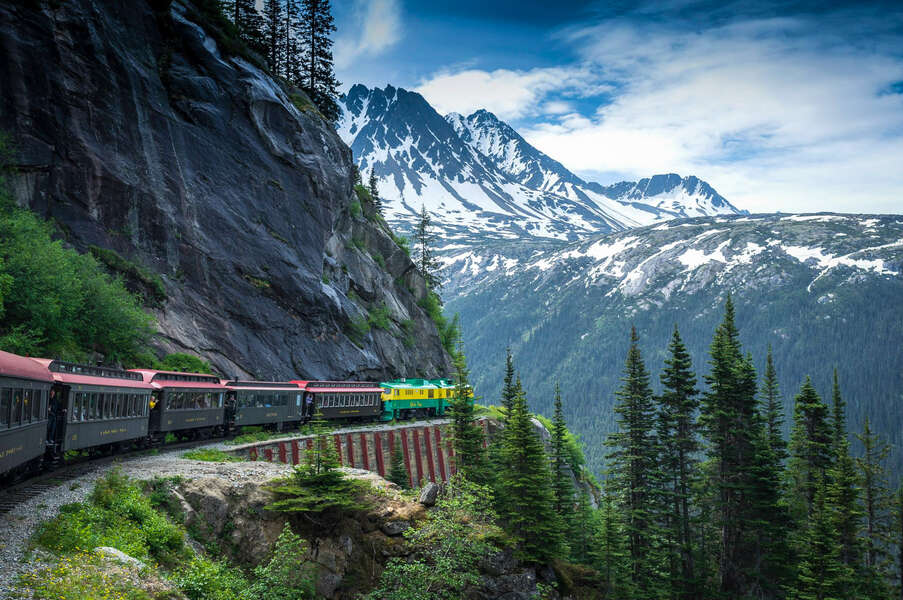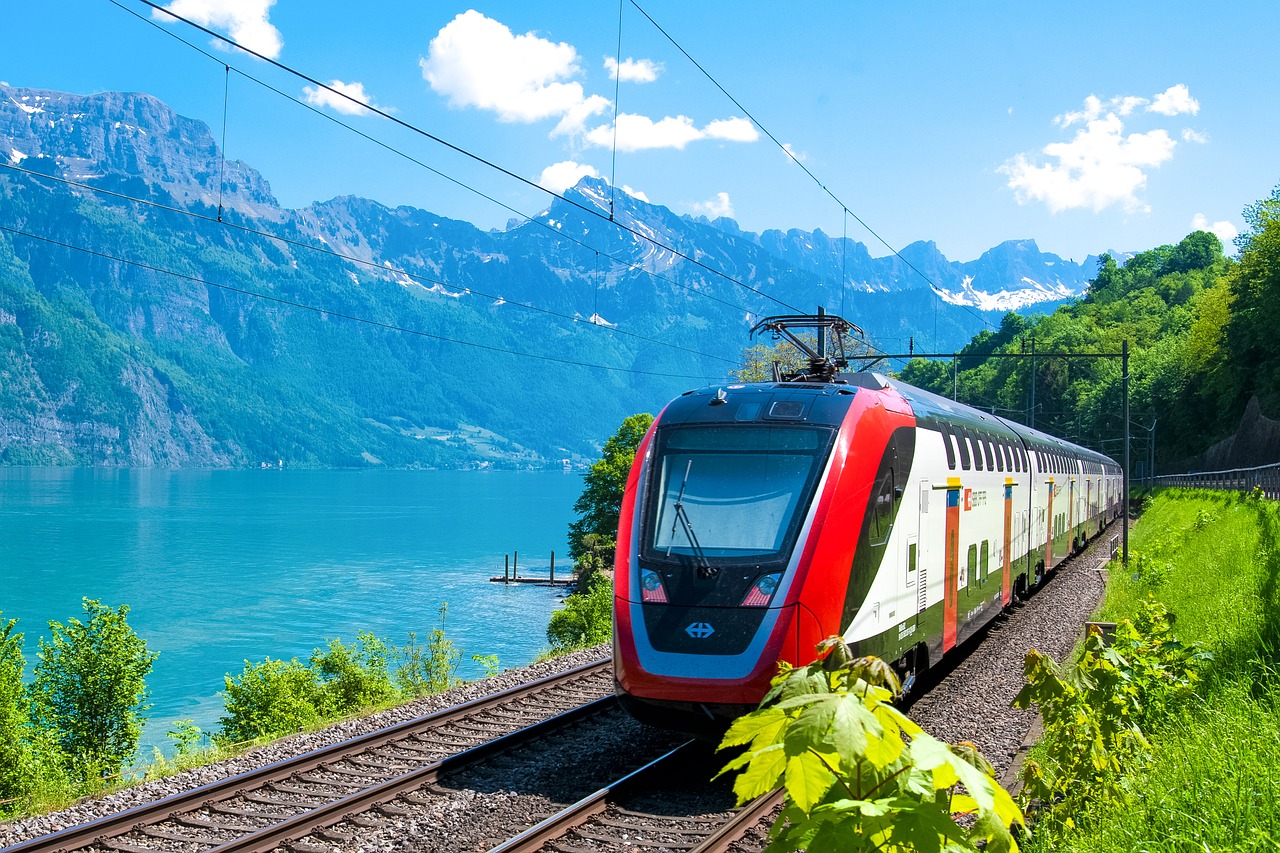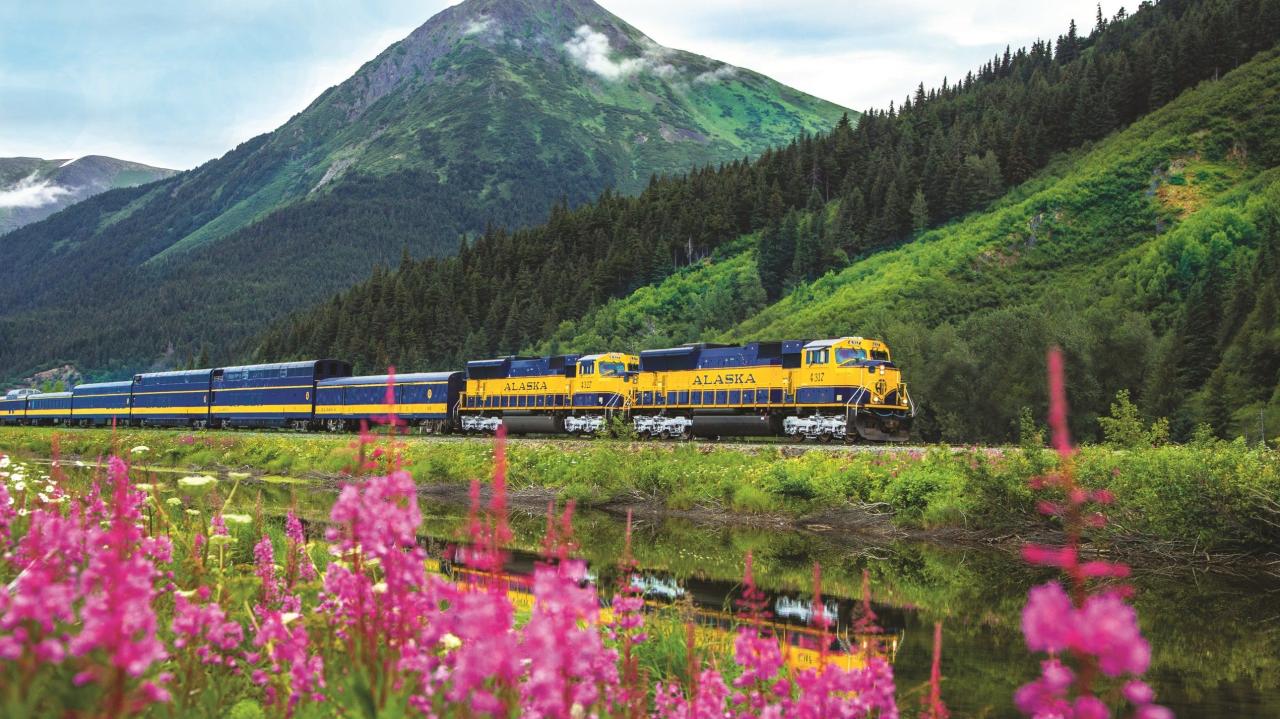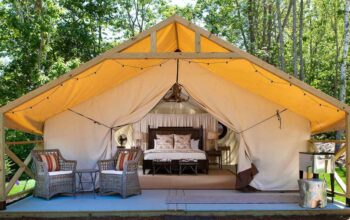In an age dominated by the frenetic pace of air travel and the often-stressful realities of road trips, a more tranquil, evocative, and environmentally conscious mode of exploration is experiencing a powerful renaissance. Train travel, once thought of as a relic of a bygone era, is now staging a remarkable and scenic comeback, repositioning itself as a premier choice for discerning travelers. This comprehensive article will delve into the compelling factors driving this resurgence, dissecting the myriad advantages that set train journeys apart, exploring the innovative trends reshaping railway tourism, and highlighting how this enduring mode of transport is redefining the very essence of exploration and connection. Prepare to discover why slowing down and savoring the journey is becoming the new gold standard for adventurers worldwide.
Embracing the Journey Itself

For much of the late 20th and early 21st centuries, the allure of distant lands was primarily defined by the speed of arrival. Air travel became synonymous with efficiency, whisking passengers across continents in mere hours. Road trips offered freedom and flexibility. However, as global travel became more common, a subtle yet profound shift began to occur. The joy of the journey itself, the unfolding landscapes, the gentle rhythm, and the authentic connections forged along the way began to gain prominence.
Train travel’s scenic comeback is a direct response to this yearning for a more mindful, enriching, and sustainable way to explore. It’s an antidote to the airport queues, the cramped seats, and the impersonal experience of modern air travel. Instead, train journeys offer a unique blend of comfort, romance, and unparalleled views, allowing travelers to truly immerse themselves in the changing panoramas outside their window. From the majestic mountains to the rolling farmlands, the bustling cities to the tranquil coastlines, the world reveals itself in a continuous, captivating tableau. It’s about more than just reaching a destination; it’s about cherishing every mile, engaging with the landscape, and experiencing a journey that becomes an integral part of the adventure. This resurgence is fueled by a desire to slow down, connect more deeply with surroundings, and enjoy travel in a way that feels both luxurious and genuinely authentic.
Why Train Travel is Roaring Back Globally
Several powerful factors are converging to drive the remarkable resurgence and widespread appeal of railway journeys:
A. Environmental Consciousness and Sustainability:
With growing awareness of climate change, travelers are increasingly seeking eco-friendlier alternatives. Train travel boasts a significantly lower carbon footprint per passenger mile compared to flying or driving, making it an attractive choice for environmentally conscious individuals looking to reduce their impact. High-speed electric trains, in particular, are champions of sustainable transit.
B. Comfort and Convenience Beyond Compare:
Unlike the often-cramped confines of airplanes, trains offer spacious seating, ample legroom, the freedom to move around, access to dining cars, and even sleeping compartments on longer routes. The lack of lengthy security checks (in many regions) and the convenience of city-center to city-center connections dramatically enhance the overall travel experience, eliminating much of the traditional travel stress.
C. The Allure of the Journey and Scenic Views:
For many, the destination is only part of the appeal. Train travel transforms the transit into an integral part of the vacation. Passengers can gaze at ever-changing landscapes, from majestic mountains and pristine coastlines to picturesque villages and vast plains, all from the comfort of their seat, often with panoramic windows designed to maximize the views.
D. Digital Detox and Connection Opportunities:
Train journeys offer a unique opportunity to disconnect from the digital world (or use Wi-Fi strategically) and reconnect with travel companions, read a book, journal, or simply enjoy the passing scenery. The relaxed pace encourages conversation and contemplation, fostering genuine human connection.
E. Accessibility and Ease of Access:
Train stations are typically located in city centers, making them highly accessible via public transport or a short taxi ride, unlike many airports which are often far from urban hubs. This ease of access significantly reduces pre- and post-travel logistics and costs.
F. Relaxing and Stress-Free Travel Experience:
The absence of turbulent flights, chaotic boarding procedures, and the need for constant navigation (as in driving) makes train travel inherently more relaxing. Passengers can work, sleep, eat, or simply unwind without the usual stresses associated with other modes of transport.
G. Cost-Effectiveness (Especially for Shorter/Medium Distances):
For many routes, particularly in Europe and Asia, train tickets can be competitive with or even cheaper than airfares, especially when factoring in baggage fees, airport transfers, and the time saved by avoiding airport formalities. Rail passes offer even greater value for multi-city trips.
The Diverse Panorama of Train Adventures
The resurgence of train travel has led to a rich diversity of experiences, catering to every type of traveler, from budget-conscious backpackers to those seeking ultimate luxury and adventure.
Popular Types of Train Journeys and Experiences
A. High-Speed City-to-City Connections:
Focusing on efficiency and speed, these journeys connect major urban centers, offering a comfortable and time-saving alternative to flying for business travelers and tourists alike. Examples include Japan’s Shinkansen, Europe’s TGV and ICE networks, and China’s Fuxing Hao. These are ideal for maximizing sightseeing time.
B. Overnight Sleeper Trains:
Providing accommodation on board, these trains save a night’s hotel cost and allow travelers to wake up in a new destination. Options range from basic reclining seats to private cabins with beds, showers, and dedicated services, perfect for longer distances.
C. Luxury and Scenic Tourist Trains:
These journeys are often destinations in themselves, focusing on breathtaking scenery, gourmet dining, and opulent amenities. They offer unparalleled panoramic views from specially designed carriages. Examples include the Venice Simplon-Orient-Express, Rocky Mountaineer (Canada), and The Blue Train (South Africa).
D. Interrail/Eurail Passes for Multi-Country Exploration:
Popular among budget travelers and backpackers, these passes offer flexible and cost-effective access to extensive rail networks across multiple countries, particularly in Europe, allowing for spontaneous multi-city adventures.
E. Heritage and Steam Train Experiences:
For a nostalgic journey back in time, these routes often utilize meticulously restored vintage carriages pulled by steam locomotives. They typically run on scenic routes, offering a glimpse into the golden age of rail. Examples include the Jacobite Steam Train (Scotland) or the Darjeeling Himalayan Railway (India).
F. Transcontinental or Long-Distance Epic Journeys:
These are multi-day expeditions that traverse vast continents, offering a deep dive into diverse landscapes and cultures. The Trans-Siberian Railway, the California Zephyr (USA), and The Ghan (Australia) are iconic examples, providing a unique sense of scale and adventure.
G. Rail-Bike or Rail-Trail Conversions:
An innovative approach where disused railway lines are converted into trails for cycling or specialized rail bikes. This offers a unique, active way to experience former railway routes and their surrounding landscapes.
H. Train Tours with Integrated Excursions:
Packages that combine train travel with organized off-train excursions, such as guided tours of towns, cultural sites, or natural parks, allowing travelers to experience the destination’s highlights seamlessly.
I. Commuter Rail as a Local Immersion Tool:
Using local commuter trains to explore a region’s smaller towns and suburbs can offer a more authentic and less touristy perspective of daily life, connecting travelers with local communities.
J. Themed Train Journeys:
Specialized trips built around a particular theme, such as a “Wine Train” in a famous wine region, a “Christmas Train” experience, or even murder mystery trains, adding a unique narrative to the journey.
Benefits for Travelers and Beyond
The advantages of choosing train travel extend far beyond comfort and scenery, offering deep personal benefits and contributing positively to sustainable tourism and community development.
Advantages of Choosing Train Travel
A. Enhanced Relaxation and Reduced Stress:
The smooth motion, spacious seating, and lack of frantic airport procedures create a uniquely calming environment, allowing travelers to relax, read, work, or simply watch the world go by without external pressures.
B. Unparalleled Scenic Views and Photo Opportunities:
Trains often traverse routes inaccessible by car or plane, offering breathtaking, continuous panoramas of diverse landscapes, from majestic mountains and vast deserts to charming villages and coastlines, providing endless photographic moments.
C. City-Center Convenience:
Arrival and departure points are typically centrally located, eliminating the need for expensive and time-consuming transfers to and from out-of-town airports, saving both money and precious travel time.
D. Environmental Stewardship:
Train travel has a significantly lower carbon footprint compared to flying or driving, making it a responsible and eco-conscious choice for travelers concerned about climate change and sustainable tourism.
E. Opportunity for Digital Detox and Connection:
The journey encourages travelers to disconnect from screens and engage in meaningful conversations with companions, reflect, or simply enjoy the present moment, fostering genuine human connection and mental well-being.
F. Freedom of Movement and Comfort:
Passengers can freely move around the train, stretch their legs, visit the dining car, or simply find a new vantage point, preventing the stiffness and discomfort often associated with other long-distance travel modes.
G. Authentic Cultural Immersion:
Train journeys provide a unique window into local life, allowing travelers to observe daily routines, interact with locals, and witness the authentic rhythm of a region as it unfolds outside their window.
H. Cost-Effective Travel (Often):
For many routes, particularly shorter to medium distances and when leveraging rail passes, train travel can be more economical than flying, especially when factoring in hidden airline fees and airport transfer costs.
I. Unique Culinary Experiences Onboard:
Many trains offer diverse dining options, from casual cafes to fine dining restaurants, allowing travelers to enjoy quality meals and local specialties while on the move, enhancing the overall journey.
Future Innovation and Integration

The momentum of train travel’s comeback is set to accelerate, driven by continued innovation, strategic investments, and a growing desire for more meaningful and sustainable ways to explore the world.
Emerging Trends in Future Train Travel
A. Seamless Cross-Border Digital Ticketing:
The development of integrated digital platforms that allow for effortless booking and management of multi-country train journeys across different operators, streamlining the entire travel process and eliminating language barriers.
B. High-Speed Rail Expansion and Interconnectivity:
Continued global investment in high-speed rail networks, connecting more cities and regions, reducing travel times, and making train travel increasingly competitive with short-haul flights across continents.
C. Enhanced Onboard Connectivity and Smart Services:
Universal, high-speed Wi-Fi across all trains, coupled with smart services that allow passengers to order food, book excursions, or access entertainment directly from their devices, personalizing the onboard experience.
D. “Hotel-on-Rails” Experiences and Private Suites:
Expansion of luxury sleeper services offering private, self-contained suites with premium amenities, dining, and personalized service, blurring the lines between a hotel stay and a train journey, catering to discerning travelers.
E. Sustainable and Regenerative Rail Tourism:
Increased focus on operating trains with 100% renewable energy, integrating carbon offsetting programs into ticket prices, and developing rail-and-trail initiatives that support local conservation and community projects along scenic routes.
F. Modular Train Design for Customization:
Trains designed with modular interiors that can be quickly reconfigured to offer different cabin types (e.g., co-working pods, family zones, wellness carriages) based on demand, providing greater flexibility and personalization.
G. Integrated Multimodal Travel Hubs:
Development of central transport hubs where train stations seamlessly connect with urban public transport, bike-sharing services, and electric vehicle rentals, offering comprehensive, eco-friendly “door-to-door” travel solutions.
H. AI-Powered Personalized Journey Planning:
AI algorithms that analyze traveler preferences, past trips, and real-time data (weather, events) to suggest personalized train routes, stopovers, and onboard experiences, making planning intuitive and highly tailored.
I. Augmented Reality (AR) Enhanced Views:
AR overlays on train windows or personal devices that provide real-time information about landmarks, history, or wildlife visible outside, enriching the scenic journey with educational and interactive content.
J. Focus on Health and Wellness Onboard:
Dedicated wellness carriages or services that offer yoga, meditation spaces, healthy meal options, and even onboard fitness zones, catering to the growing demand for holistic well-being during travel.
Conclusion
The scenic comeback of train travel is more than just a trend; it’s a testament to a collective desire for a slower, more meaningful, and environmentally responsible way to experience the world. It reminds us that the journey itself holds immense value, offering unparalleled perspectives, moments of quiet contemplation, and opportunities for genuine connection that are often lost in the rush of modern life.
As infrastructure continues to expand, technology enhances the onboard experience, and travelers increasingly prioritize sustainability and comfort, the future of exploration looks bright, and it’s very much on track. So, the next time you plan an adventure, consider trading the terminal for the tracks. Allow the rhythmic clickety-clack and the ever-changing panorama to redefine your travel narrative, proving that sometimes, the most thrilling part of the journey is not the destination, but the beautiful, unfolding path to get there.













